The projected home
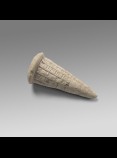
Foundation cone. Mesopotamia, Lagash (al-Hiba) city-state, now Iraq.Around 2120 BC. Private collection. Photo: Guillem Fernández Huerta
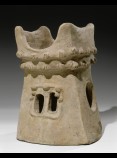
Model of a tower . Syria. Late Bronze Age 13th -12th centuries BC. Musée du Louvre, Département des Antiquités orientales, Paris. Photo: RMN-Grand Palais (musée du Louvre) / Christian Larrieu
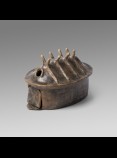
Funerary urn. Italy. Villanovan culture, northern Italy. 9th century BC. Terracotta in the shape of a hut
Private collection Photo: Guillem Fernández Huerta
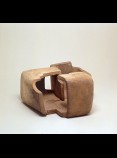
The Poet’s House, III. Grasse (France), 1981. Eduardo Chillida in collaboration with the ceramicist Hans Spinner
Chillida-Belzunce family
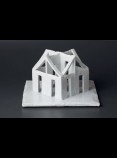
Labyrinth H, D, F. Barcelona, 2003 and 2005. Maria Bofill .Artist’s collection. Photo: Guillem Fernández Huerta
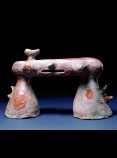
Personnage terre rouge. Gallifa (Barcelona), 1945 Joan Miró in collaboration with Josep Llorens Artigas. Private collection © Successió Miró 2016
Monumental architecture was not improvised. Builders, by order of priests or monarchs, produced plans, models and reports which were believed to be inspired by supernatural powers. Texts and designs were traced on clay or terracotta tablets in Mesopotamia, and the names of gods were inscribed on tablets that were buried in the foundations together with terracotta models that represented the house of ancestors past, whose protection was invoked.
Of the architecture of ancient cultures such as the Mesopotamian, Iberian or Etruscan civilisations only the foundations remain, constructed with adobe bricks. We wouldn’t know what the buildings were like if some objects in tombs, similar to architecture models placed as offerings, hadn’t been preserved: these were miniature buildings that held the ashes or spirit of the deceased. Thanks to these, people came into contact with the deceased to find out about the past (not the future) as they offered the model examples required to live well. Other models reproduced temples or chapels and were kept in the houses.
Today, many ceramicists make works that evoke architectural models or small-scale buildings offering a critical look at both the virtues and limitations of contemporary constructions, or perhaps they are more a nostalgic look back at the home we have lost.


